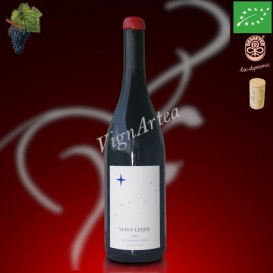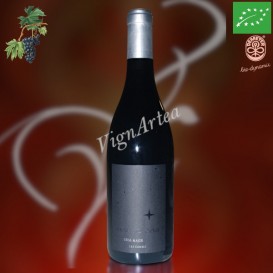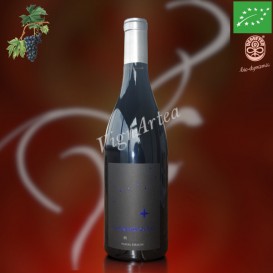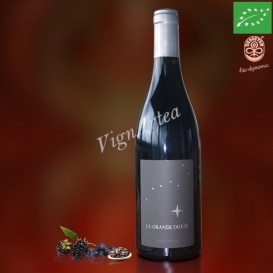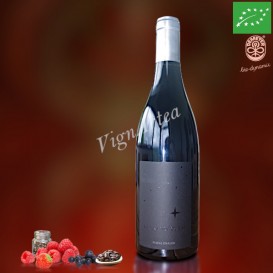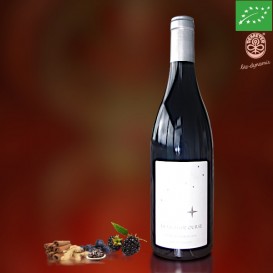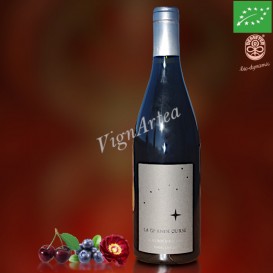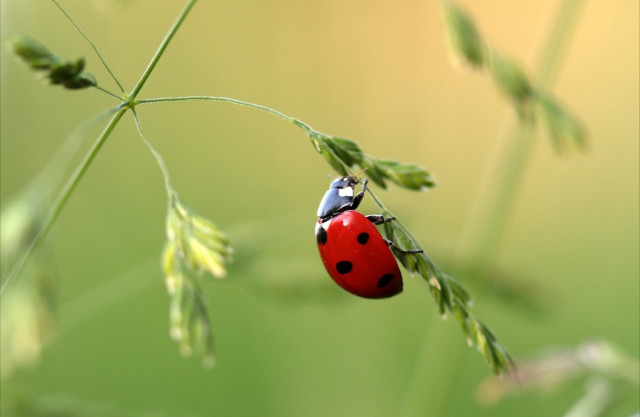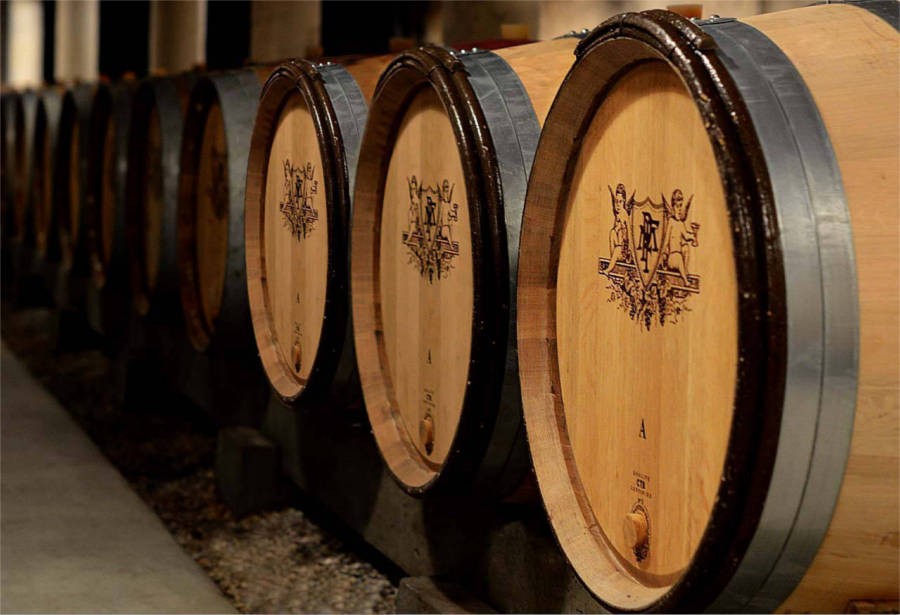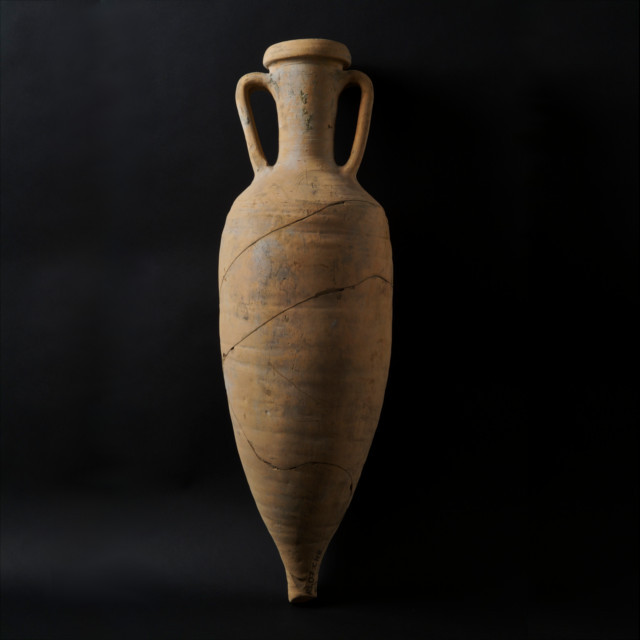Domaine LA GRANDE OURSE - Pascal CHALON

CÔTES-DU-RHÔNE BIODYNAMICS WINEMAKER : Pascal CHALON
ESTATE HISTORY
Pascal CHALON created his estate in 2002. Although he comes from a winegrowers family, he was not destined for this profession, moving towards studies in economics. But some opportunities prompted him to return to the family estate in the 90s in order to produce his own wine.
2002 was its first vintage. If the vineyard culture was then traditional, Pascal felt the need to go further to obtain more vigorous and balanced vines. After some time spent studying biodynamics, he then began to use preparations according to his intuition, carefully observing their effects on the vine.
Since 2008, the estate is fully certified Organic Farming and its biodynamic DEMETER label is scheduled for 2021.
TERROIR
At the end of the Cretaceous, early Paleocene, 65 million years ago, tectonic movements occur in the area of Suze La Rousse / Valréas, causing its emersion : the emerged rocks are decarbonated or desilicified and this alteration can be found today in places in the ground in the form of a siliceous or ferruginous crust. Then the sea invades the region again, with deposit of sandstone limestones and yellow sands.
Towards the end of the Tortonian, in the Miocene, about 7 million years ago, the marine regression begins under the effect of a new subalpine folding, while a concomitant drop in the Mediterranean sea level leads to a rapid digging of the hydrographic network : fluvial alluvium is then deposited in the valleys.
In the Pliocene (between -5 and -1.8 million years), a new marine transgression favors a very short brackish sedimentation episode, followed by a generalized silting with coarser stony and sandy deposits on the coastal parts.
In the Quaternary, two million years ago, the major event in the region was the digging of the Rhône bed, accompanied by some tectonic movements causing earthquakes around the Tricastin area.
The Pascal Chalon's estate parcels, located in the villages of VISAN and TULETTE, are based on Rissian alluvium dating from the last Quaternary glaciations and made up of limestone gravel sometimes with presence of flint and siliceous sandstone. In places, these alluviums are covered with more recent deposits left by rivers and forming a more or less gravelly and sandy silt layer.
The vineyard exposure and location are very variable, the latter is spread sometimes into terraces, sometimes on hillsides, or even also in sandy soils that Pascal Chalon reserves for the white grape varieties culture.
The plots in the village of TULETTE are planted with Grenache Noir, Carignan, Mourvèdre, Syrah, Counoise, Muscardin, Grenache Blanc, Roussanne and Bourboulenc. In VISAN, the grape variety includes Syrah and Grenache Noir.
WINEGROWING & WINEMAKING
The grapes maturity is determined by tasting the berries. The harvest is done manually and the grapes are sorted on site, directly in the vines at the time of picking.
The grapes are then vinified with native yeasts and bacteria, as Pascal Chalon does not wish add any input in his wines except some sulphites for their anti-bacterial and anti-oxidant actions.
For the red wines production, the grapes are completely destemmed, the fermentation takes place in 10 to 50 hl vats and the maceration lasts about 1 month. The must is then pressed : the free-run juice (first juice from the first press) and the press juice (last juice obtained after several presses, therefore more concentrated and more tannic) are blended for the must obtained with grapes of the VISAN village.
After racking, the wines are aged for twelve months in various containers : Bordeaux barrel, Burgundy barrel, demi-muid, cask and sawn-off cone tank.
For the white wines, the vinification is made in demi-muid and in vats : 1/3 of vats, 1/3 of several wines barrels, and 1/3 of new barrels. The alcoholic and malolactic fermentations take place spontaneously under the native yeasts and bacteria actions, then the must is matured on fine lees for approximately 11 months.
The red and white wines are never fined, just lightly filtered according to the results of the bacteriological analyzes.
Pascal Chalon's wines charmed us with their aromatic complexity and richness. The juice is dense and full-bodied. Those wines are still unknown but very elegant, whose style is getting close to the Châteauneuf-du-Pape's one .
-
SAINT-LEGER 2022 (Pascal CHALON) (anc. La Grande Ourse M)
28,90 € In stock!RHÔNE - AOP CÔTES DU RHÔNE VILLAGES SUZE-LA-ROUSSE - RED WINE
Grape variety: Mourvèdre (100%)
Organic wine Natives Yeasts
Ageing of 12 months in demi-muidsRacy - Subtle - Elegant
- Nose: intense and tasty. Notes of black fruit, black pepper and a hint of coffee.
- Palate: fluid and fresh, structured by silky tannins. Persistent black fruit finish.
- Tasting date: June 2024.
- OUR OPINION: subtle on the nose, with lovely aromatic complexity, this 100% Mourvèdre is still young and needs to be lightly decanted in its youth. This is a very fine wine for gastronomy.
- Nose: intense and tasty. Notes of black fruit, black pepper and a hint of coffee.
-
URSA MAJOR 2022 WHITE WINE (Pascal CHALON)
32,90 € In stock!RHÔNE - VIN DE FRANCE - DRY WHITE WINE
Grape varieties: Grenache gris - Grenache blanc
Organic wine Natives Yeasts
Lees ageing of 11 months in new demi-muidsFresh - Invigorating - Aniseed-flavoured
- Nose: resh and spring-like. Notes of white peaches, white flowers and aniseed.
- Palate: nvigorating and thirst-quenching, tasty and perfectly balanced. Long-lasting aromas on the finish.
- Tasting date: June 2024.
- OUR OPINION: magnificent! This cuvée, now made exclusively from Grenache Blanc and Grenache Gris, evokes the freshness of the seaside. It's invigorating, complex and a great success!
- Nose: resh and spring-like. Notes of white peaches, white flowers and aniseed.
-
LA GRANDE OURSE 2022 WHITE WINE (Pascal CHALON)
18,99 € In stock!RHÔNE - AOP CÔTES DU RHÔNE VILLAGES - DRY WHITE WINE
Grape varieties: Grenache blanc (60%) - Roussanne (30%) - Bouboulenc (10%)
Organic & Biodynamic Natives Yeasts
Lees ageing of 11 months in demi-muids & concrete eggsElegant - Racy - Pure
- Nose: pure, elegant and chiselled. Slightly aniseed notes, fragrances of white flowers and white peaches.
- Palate: fluid and invigorating, nicely perfumed and salivating. Long lime finish.
- Tasting date: June 2024
- OUR OPINION: this cuvée is becoming more refined year after year. It gains in purity and finesse. The 2022 vintage is superb, perfectly balanced, harmonious and racy. A very fine wine!
- Nose: pure, elegant and chiselled. Slightly aniseed notes, fragrances of white flowers and white peaches.
-
URSA MAJOR 2021 RED WINE (Pascal CHALON)
24,50 € In stock!RHÔNE - AOP CÔTES DU RHÔNE VILLAGES SUZE-LA-ROUSSE - RED WINE
Grape varieties: Grenache noir (55%) - Mourvèdre (30%) - Syrah (10%), Counoise & Muscardin (5%)
Organic wine Natives Yeasts Ageing of 12 months
- Nose: fruity. Notes of black cherry juice with a hint of pepper and coffee.
- Palate: round and juicy, with a delicate touch. Dark fruit finish.
- Tasting date: December 2023.
- OUR OPINION: tasty, fruity and round! Be sure to open it 1/4 hr before serving so that it can breathe a little!
- Nose: fruity. Notes of black cherry juice with a hint of pepper and coffee.
-
LA GRANDE OURSE M 2021 RED WINE (Pascal CHALON)
22,50 € In stock!RHÔNE - AOP CÔTES DU RHÔNE VILLAGES SUZE-LA-ROUSSE - RED WINE
Grape varieties: Mourvèdre in majority - Grenache noir
Organic wine Natives Yeasts
Ageing of 12 months in demi-muids- Nose: open, generous and delicious. Notes of black fruit, cinnamon and ginger.
- Palate: supple. Tannins are present but silky. Long finish of blackberry juice.
- Tasting date: December 2023.
- OUR OPINION: mourvèdre as beautiful, elegant and generous as ever. A real moment of indulgence!
- Nose: open, generous and delicious. Notes of black fruit, cinnamon and ginger.
-
LA GRANDE OURSE 2021 PRIMIS RED WINE (Pascal CHALON)
18,90 € In stock!RHÔNE - AOP CÔTES DU RHÔNE VILLAGES SUZE-LA-ROUSSE - RED WINE
Grape varieties: Grenache noir (55%)- Mourvèdre (30%) - Syrah (10%) - Counoise & Muscardin (5%)
Organic & Biodynamic Natives Yeasts
Ageing of 12 months- Nose: tasty and generous. Notes of eucalyptus, black fruit and chocolate.
- Palate: finely structured, rich and dense. Well-balanced.
- Tasting date: May 2023.
- OUR OPINION: a young vintage that can be kept in cellar for one or two years, or decanted a few hours before serving. Beautiful aromas, a successful and promising vintage.
- Nose: tasty and generous. Notes of eucalyptus, black fruit and chocolate.
-
URSA MAJOR 2020 RED WINE (Pascal CHALON)
24,00 € In stock!RHÔNE - AOP CÔTES DU RHÔNE VILLAGES SUZE-LA-ROUSSE - RED WINE
Grape varieties: Grenache noir (55%) - Mourvèdre (30%) - Syrah (10%), Counoise & Muscardin (5%)
Organic wine Natives Yeasts Ageing of 12 months
- Nose: concentrated. Spicy notes, black fruits with a hint of coffee.
- Palate: rich and silky. Very fine tannins. Long-lasting aromas, fruity finish.
- Tasting date: June 2023.
- OUR OPINION: very successful, a dense, deep, rich wine. Perfect!
- Nose: concentrated. Spicy notes, black fruits with a hint of coffee.
-
LA PETITE OURSE 2021 (Pascal CHALON)
16,90 € In stock!RHÔNE - AOP CÔTES DU RHÔNE VILLAGES - RED WINE
Grape varieties: Grenache (55%) - Syrah (45%)
Organic Native yeasts
Ageing for 11/12 months in truncated-cone tanks & 1/2 muids- Nose: intense. Notes of black fruits, coffee, liquorice and spices.
- Palate: supple, round and tasty.
- Tasting date: April 2023
- OUR OPINION: It's still as good as ever! 2021 is a rich vintage with concentrated and tasty aromas. A real treat!
- Nose: intense. Notes of black fruits, coffee, liquorice and spices.
-
LA GRANDE OURSE LE PEYRON 2020 (Pascal CHALON)
19,50 € In stock!RHÔNE - AOP CÔTES DU RHÔNE VILLAGES SUZE-LA-ROUSSE - RED WINE
Grape varieties: Grenache - Mourvèdre
Organic wine Natives Yeasts
Ageing of 12 months in oak barrels & tunes- Nose: notes of cocoa powder, black fruit and cinnamon.
- Palate: rich, dense body and supple tannins. Lingering finish. .
- Tasting date: May 2023.
- OUR OPINION: this new vintage is racy, distinguished and elegant. A great success!
- Nose: notes of cocoa powder, black fruit and cinnamon.

